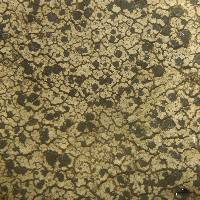
Consortium of Lichen Herbaria
- building a Global Consortium of Bryophytes and Lichens as keystones of cryptobiotic communities -
- Home
- Search
- Images
- Species Checklists
- US States: O-Z >
- US National Parks
- Central America
- South America
- US National Parks
- Southern Subpolar Region
|
|
|
|
Family: Caliciaceae
|
Nash, T.H., Ryan, B.D., Gries, C., Bungartz, F., (eds.) 2007. Lichen Flora of the Greater Sonoran Desert Region. Vol 3. Thallus: crustose, granular-areolate to verrucose, thin to moderately thickened, ±continuous; prothallus: absent or delimiting the thallus margin as a black outline surface: usually pale yellow, rarely becoming yellowish gray (older herbarium specimens), dull or ±shiny, smooth, epruinose, phenocorticate, esorediate medulla: white, lacking calcium oxalate (H2SO4-) Apothecia: lecideine; (0.1-)0.2-0.4 (-0.6) mm in diam., immersed, becoming adnate to sessile margin: black, thin, reduced, inconspicuous disc: black, epruinose, plane, rarely becoming slightly convex with age proper exciple: narrow, poorly differentiated, aethalea-type, inner excipular hyphae narrow, hyaline, prosoplectenchymatous (textura oblita), often reduced, similar in structure and orientation to the paraphyses, transient with the deep reddish brown hypothecium (leptoclinoides-brown, textura intricata), outer excipular hyphae parallel, moderately swollen (textura oblita) and strongly carbonized with various amounts of a brown pigment (cf. elachista-brown, HNO3-) epihymenium: brown, pigmentation continuous with the outer exciple (HNO3-) hymenium: hyaline, not inspersed with oil droplets; paraphyses: simple to moderately branched, apically swollen, with a brown pigment cap (cf. elachista-brown) asci: clavate, Bacidia-type, 8-spored ascospores: soon brown, 1-septate, oblong to ellipsoid, often constricted, with obtuse ends, not curved, (12-)14.2-[16.4]-18.6(-22) x (6-)7.1-[8.1]-9(-11) µm (n=60); proper septum: becomes thickened early but only briefly during spore ontogeny, with two dark bands across each cell (±Physconia [or Callispora]-type); ornamentation: rugulate Pycnidia: rare, urceolate to globose, unilocular; ontogeny similar to the Umbilicaria-type conidiogenous cells: mostly terminal, rarely also intercalary (cf. conidiophore-type V) conidia: bacilliform, 7-11.5 x 1-1.5 µm (n=20) Spot tests: K+ yellow to orange (crystals) and P+ yellow to orange, C-, KC-, CK- fluorescence: UV+ deep orange iodine reaction: medulla non-amyloid Secondary metabolites: 4,5-dichlorolichexanthone, norstictic, cryptostictic, and methylstictic acids (J. A. Elix, HPLC). Substrate and ecology: epilithic, on a variety of siliceous (HCl-) rock substrates in montane areas World distribution: from central Mexico to southwestern USA Sonoran distribution: occasional in southeastern Arizona and probably more common in the Sierra Madre Occidental (Sonora, Sinaloa, and Chihuahua). Notes: Buellia subaethalea is uniquely characterized by its granular-areolate to verrucose, pale yellowish green thallus, coarsely ornamented spores with two distinct bands that can be best observed at spore maturity. |
Powered by Symbiota
























